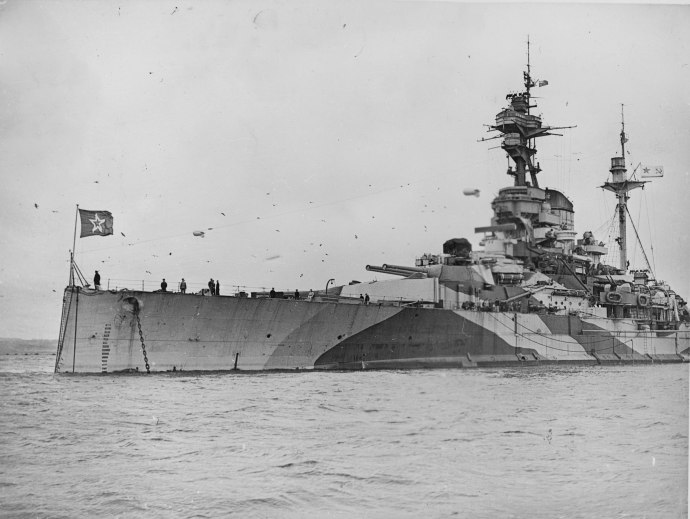The HMS Royal Sovereign was one of the mid-World War I R-class battleships that would end up serving all over the world, but saw little direct combat in two wars. She missed the Battle of Jutland in the spring of 1916 by only a few weeks, but once operational, she joined the Home Fleet. Later, during the 19 30’s, she served in the Mediterranean as a counter-weight to Italy’s growing naval power.
Like most of the other R-Class battleships, the Royal Sovereign was not substantially modernized during the inter-war period, or even after 1939 when it became clear her anti-aircraft armament was woefully inadequate. Nevertheless, she performed convoy escort duties in the Atlantic, the Med, and later in the Indian Ocean. After a refit in Philadelphia in 1943, where some of her six inch guns were removed so that her deck armor could be increased by two inches, she returned the Indian Ocean for further convoy work.
In the summer of 1944, she escorted convoy JW-59 through the Arctic Sea on the northern Lend-Lease run. Once in the Soviet Union, the crew turned her over to the Russian Navy. A deal had been struck between London and Moscow to loan the Royal Sovereign to the Russians in lieu of sending several captured Italian warships to the Black Sea Fleet as part of Italy’s reparation payment to the Soviet Union.
Crewed by Soviet sailors and commissioned in August 1944 as the Arkhangelsk and became Admiral Gordey Levchenko’s flagship. At the time, she was the largest vessel in the Soviet Navy. She continued to escort Allied convoys until war’s end. Following the surrender, she ran aground and was seriously damaged. The Russians returned her in 1949 after receiving the Italian battleship Giulio Cesare as reparations. She was in such poor condition by 1949 that the British quickly sold her for scrap.






